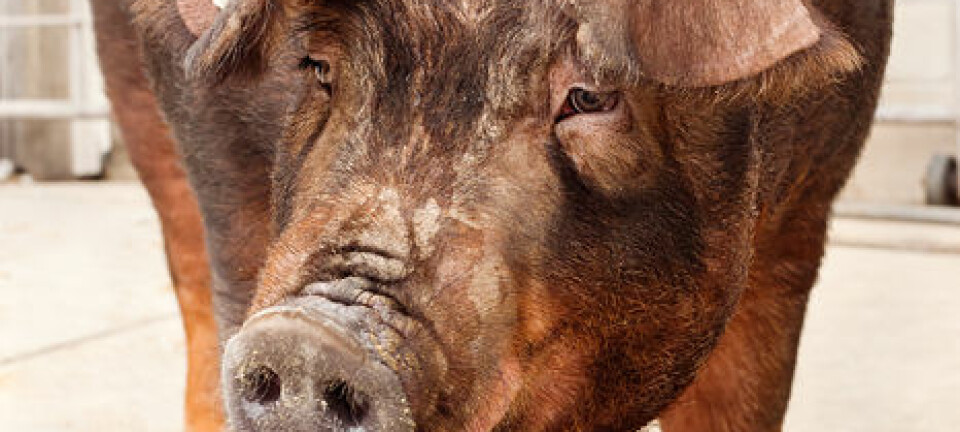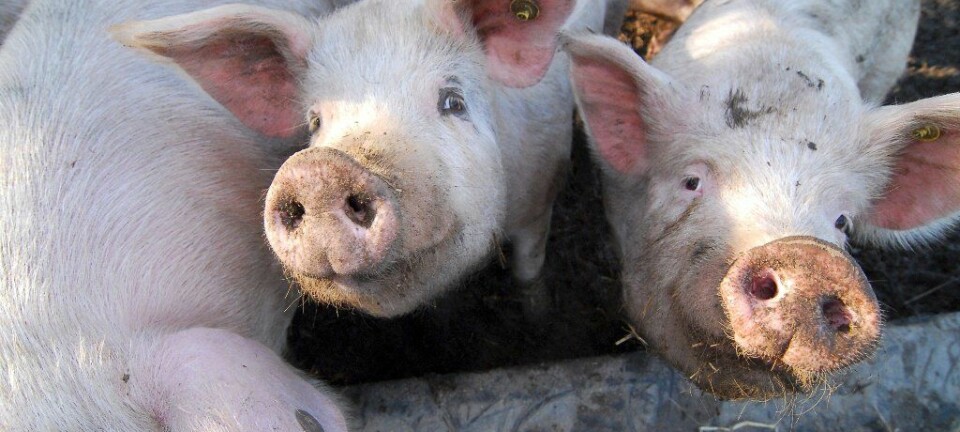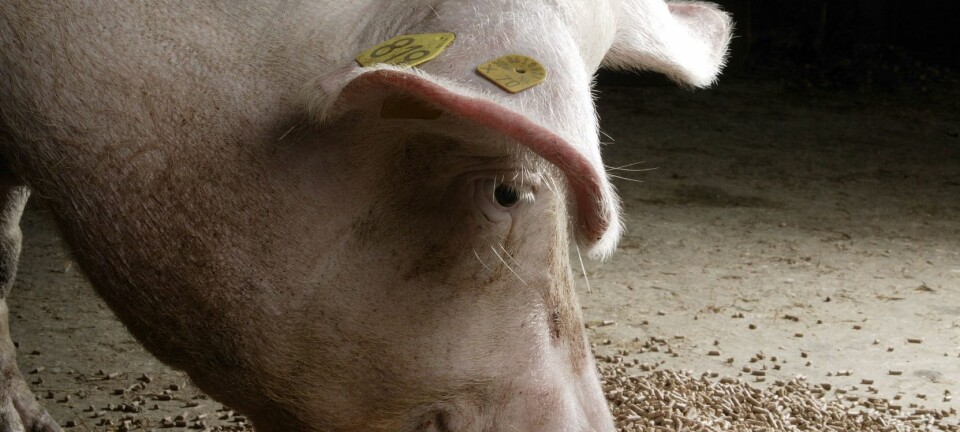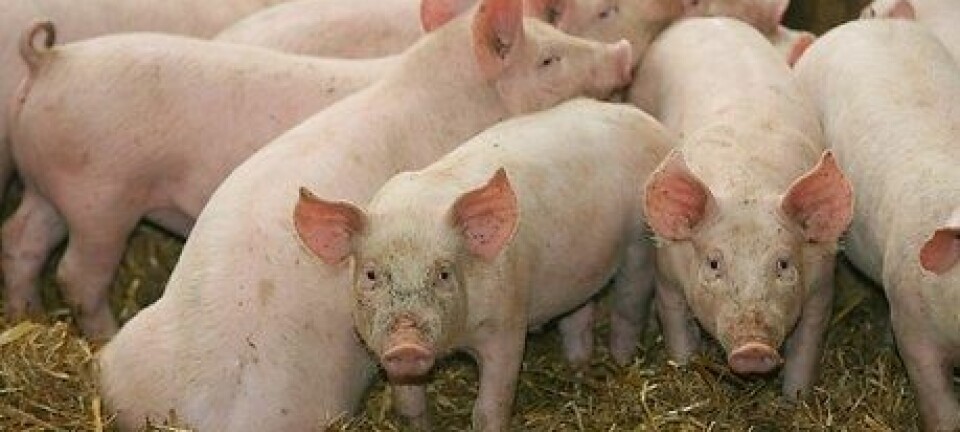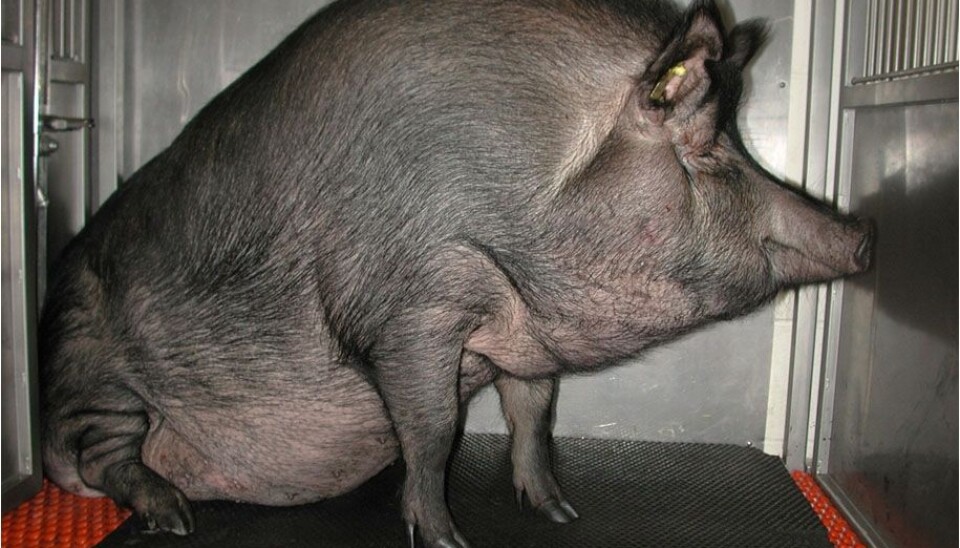
Protein can cause lifestyle diseases in fat pigs
A special obesity-related protein has been found in an American wild hog, which bears a striking resemblance to humans. The discovery represents a great step forward in international obesity research.
When an American wild hog from the island of Ossabaw, off the coast of the state of Georgia, becomes extremely fat, it can develop diabetes and cardiovascular diseases just like obese humans.
A Danish researcher has now discovered that the hog also carries a special protein, which is also present in the bloodstream of obese humans.
“The Ossabaw Island Hog is a threatened breed that lives only on an American island. The living conditions on the island are similar to ours with cold winters and warm summers,” says Tina Rødgaard, of the National Veterinary Institute at the Technical University of Denmark (DTU Vet), who has just defended her PhD thesis.
”In the summer, the pig gorges on food, which it then lives on in the winter, just like our ancestors did for many centuries. That’s why the pig’s genetic evolution is similar to ours.”
In the summer, the pig gorges on food, which it then lives on in the winter, just like our ancestors did for many years. That’s why the pig’s genetic evolution is similar to ours.
Tina Rødgaard
In her study, Rødgaard discovered that the Ossabaw Island Hog carries a protein known as orosomucoid (ORM). The concentration of this protein is particularly high in fat pigs, and that could indicate that the pig is about to develop obesity-related diseases.
We humans also have this protein in our blood, and its concentration increases when we become overweight. For this reason, the Ossabaw Island Hog is an extremely good animal model for obesity.
The pig can e.g. be used for studying whether obesity-related diseases can be traced by measuring the ORM concentration in the blood.
Immune system in obese people is constantly on alert
Large amounts of the ORM protein are normally released into the bloodstream when we are ill or for instance if we cut ourselves. But this concentration drops quickly.
Now that we know that Ossabaw Island Hogs carry the same protein in their blood as obese people, we can use the pig to conduct further research into why some obese people develop lifestyle diseases while others do not.
Tina Rødgaard
Obese people, on the other hand, always have high concentrations of the protein in their blood and in their immune system, which is constantly on alert in people who weight too much.
Extremely obese people are particularly susceptible to lifestyle diseases such as diabetes, cardiovascular diseases and certain types of cancer.
”Studies have shown that the protein can be a marker of infection because the concentration increases when you’re overweight. But we want to learn more about the function of this protein,” says the researcher.
”For example, we wanted to find out if there’s a difference in how much the protein concentration increases in relation to how much we eat. Maybe there are certain types of fat that increase the ORM concentration more than others.”
Pigs eat meat, chips and chocolate
Rødgaard discovered the ORM protein in the Ossabaw Island Hog by examining its fat tissue in various body parts, including the abdomen and the neck.
Since the Ossabaw Island Hog is a threatened breed and cannot be imported to Denmark, the tissue samples were taken at the University of Indiana in the US, which has an entire colony of pigs.
Fat tissue from the Göttingen minipig – a breed developed at the University of Göttingen in Germany for medical research – and an ordinary Danish livestock pig was also examined. Neither of these breeds turned out to have the ORM protein in their blood.
”Now that we know that Ossabaw Island Hogs carry the same protein in their blood as obese people, we can use the pig to conduct further research into why some obese people develop lifestyle diseases while others do not.”
Pigs are popular laboratory animals for obesity researchers, since their metabolism is very similar to ours. Pigs can for instance eat meat, chips and chocolate, just like we can.
“They’ll eat whatever they get,” she says.
Researchers can also put pigs on controlled diets and use them for experiments for which neither humans nor mice are suitable.
--------------------------
Read the Danish version of this article at videnskab.dk
Translated by: Dann Vinther
